Analysis and Design of an Air-Coupled DC Transformer with a Hybrid Modulation Control Method
Abstract
:1. Introduction
2. Proposed Air-Coupled DC Transformer
3. Power Stage Analysis
3.1. Resonant Analysis
3.2. Forward Transfer Mode Analysis
3.3. Reverse Power Transfer Mode Analysis
4. Control System Design
4.1. Small Signal Analysis
4.2. Forward Power Transfer Control Loop
4.3. Reverse Power Transfer Control Loop
4.4. System Working Strategy
5. PSIM/MATLAB System Simulation
5.1. Forward Open Loop System Simulation
5.2. Forward Closed Loop Simulation
5.3. Reverse Open Loop System Simulation
5.4. Reverse Closed-Loop Simulation
5.5. Full System Simulation
6. Experiments and Analysis
6.1. Forward Transfer Open Loop And Closed Loop Experiments
6.2. Reverse Transfer Open Loop and Closed Loop Experiments
7. Conclusions
Author Contributions
Funding
Conflicts of Interest
References
- Zheng, H.; Ma, H.; Ma, K.; Bo, Z. Modeling and analysis of the AC/DC hybrid micro-grid with bidirectional power flow controller. In Proceedings of the 2017 China International Electrical and Energy Conference (CIEEC), Beijing, China, 25–27 October 2017; pp. 280–284. [Google Scholar]
- Chen, Z.; Wang, K.; Li, Z.; Zheng, T. A review on control strategies of AC/DC micro grid. In Proceedings of the 2017 IEEE International Conference on Environment and Electrical Engineering and 2017 IEEE Industrial and Commercial Power Systems Europe (EEEIC/I&CPS Europe), Milan, Italy, 6–9 June 2017; pp. 1–6. [Google Scholar]
- Kakigano, H.; Miura, Y.; Ise, T.; Uchida, R. DC Voltage Control of the DC Micro-grid for Super High Quality Distribution. In Proceedings of the 2007 Power Conversion Conference, Nagoya, Japan, 2–5 April 2007; pp. 518–525. [Google Scholar]
- Liu, B.; Zhuo, F.; Zhu, Y.; Yi, H. System Operation and Energy Management of a Renewable Energy-Based DC Micro-Grid for High Penetration Depth Application. IEEE Trans. Smart Grid 2015, 6, 1147–1155. [Google Scholar] [CrossRef]
- Davari, M.; Mohamed, Y.A.I. Robust Multi-Objective Control of VSC-Based DC-Voltage Power Port in Hybrid AC/DC Multi-Terminal Micro-Grids. IEEE Trans. Smart Grid 2013, 4, 1597–1612. [Google Scholar] [CrossRef]
- Zhang, Y.; Lu, T.; Zhao, Z.; He, F.; Chen, K.; Yuan, L. Selective Wireless Power Transfer to Multiple Loads Using Receivers of Different Resonant Frequencies. IEEE Trans. Power Electron. 2015, 30, 6001–6005. [Google Scholar] [CrossRef]
- Zhang, Y.; Chen, K.; He, F.; Zhao, Z.; Lu, T.; Yuan, L. Closed-Form Oriented Modeling and Analysis of Wireless Power Transfer System With Constant-Voltage Source and Load. IEEE Trans. Power Electron. 2016, 31, 3472–3481. [Google Scholar] [CrossRef]
- Zhang, Y.; Zhao, Z.; Chen, K. Frequency Decrease Analysis of Resonant Wireless Power Transfer. IEEE Trans. Power Electron. 2014, 29, 1058–1063. [Google Scholar] [CrossRef]
- Dai, J.; Ludois, D.C. A Survey of Wireless Power Transfer and a Critical Comparison of Inductive and Capacitive Coupling for Small Gap Applications. IEEE Trans. Power Electron. 2015, 30, 6017–6029. [Google Scholar] [CrossRef]
- Zhong, W.; Hui, S.Y.R. Auxiliary Circuits for Power Flow Control in Multifrequency Wireless Power Transfer Systems With Multiple Receivers. IEEE Trans. Power Electron. 2015, 30, 5902–5910. [Google Scholar] [CrossRef]
- Kurs, A.; Karalis, A.; Moffatt, R.; Joannopoulos, J.D.; Fisher, P.; Soljai, M. Wireless power transfer via strongly coupled magnetic resonances. Sci. Express 2007, 317, 83–86. [Google Scholar] [CrossRef]
- Lu, F.; Zhang, H.; Hofmann, H.; Mi, C.C. An Inductive and Capacitive Combined Wireless Power Transfer System with LC-Compensated Topology. IEEE Trans. Power Electron. 2016, 31, 8471–8482. [Google Scholar] [CrossRef]
- Berger, A.; Agostinelli, M.; Vesti, S.; Oliver, J.A.; Cobos, J.A.; Huemer, M. A Wireless Charging System Applying Phase-Shift and Amplitude Control to Maximize Efficiency and Extractable Power. IEEE Trans. Power Electron. 2015, 30, 6338–6348. [Google Scholar] [CrossRef]
- Li, H.; Fang, J.; Chen, S.; Wang, K.; Tang, Y. Pulse Density Modulation for Maximum Efficiency Point Tracking of Wireless Power Transfer Systems. IEEE Trans. Power Electron. 2018, 33, 5492–5501. [Google Scholar] [CrossRef]
- Liu, F.; Yang, Y.; Jiang, D.; Ruan, X.; Chen, X. Modeling and Optimization of Magnetically Coupled Resonant Wireless Power Transfer System with Varying Spatial Scales. IEEE Trans. Power Electron. 2017, 32, 3240–3250. [Google Scholar] [CrossRef]
- Nguyen, M.Q.; Chou, Y.; Plesa, D.; Rao, S.; Chiao, J. Multiple-Inputs and Multiple-Outputs Wireless Power Combining and Delivering Systems. IEEE Trans. Power Electron. 2015, 30, 6254–6263. [Google Scholar] [CrossRef]
- Huang, M.; Lu, Y.; Martins, R.P. A Reconfigurable Bidirectional Wireless Power Transceiver for Battery-to- Battery Wireless Charging. IEEE Trans. Power Electron. 2019, 34, 7745–7753. [Google Scholar] [CrossRef]
- Huang, C.; Lin, C. Wireless Power and Bidirectional Data Transfer Scheme for Battery Charger. IEEE Trans. Power Electron. 2018, 33, 4679–4689. [Google Scholar] [CrossRef]
- Seo, D.; Lee, J.; Lee, H. Optimal Coupling to Achieve Maximum Output Power in a WPT System. IEEE Trans. Power Electron. 2016, 31, 3994–3998. [Google Scholar] [CrossRef]
- Lim, Y.; Park, J. A Novel Phase-Control-Based Energy Beamforming Techniques in Nonradiative Wireless Power Transfer. IEEE Trans. Power Electron. 2015, 30, 6274–6287. [Google Scholar] [CrossRef]
- Shin, S.; Shin, J.; Song, B.; Lee, S.; Kim, Y.; Jung, G.; Jeon, S. Wireless power transfer system for high power application and a method of segmentation. In Proceedings of the 2013 IEEE Wireless Power Transfer (WPT), Perugia, Italy, 15–16 May 2013; pp. 76–78. [Google Scholar]
- Sanborn, G.; Phipps, A. Standards and methods of power control for variable power bidirectional wireless power transfer. In Proceedings of the 2017 IEEE Wireless Power Transfer Conference (WPTC), Taipei, Taiwan, 10–12 May 2017; pp. 1–4. [Google Scholar]
- Qahouq, J.A.A.; Dang, Z. Investigation and simulation model results of high density wireless power harvesting and transfer method. In Proceedings of the 2017 IEEE Applied Power Electronics Conference and Exposition (APEC), Tampa, FL, USA, 26–30 March 2017; pp. 3095–3099. [Google Scholar]
- Zheng, H.; Wang, Z.; Li, Y.; Deng, P. Data transmission through energy coil of wireless power transfer system. In Proceedings of the 2017 IEEE PELS Workshop on Emerging Technologies: Wireless Power Transfer (WoW), Chongqing, China, 20–22 May 2017. [Google Scholar]
- Lee, C.H.; Jung, G.; Shin, S.; Kim, Y.; Song, B.; Shin, J.; Chung, S.H.; Kim, D.O.; Lee, J. Design and introduction of high power transfer system for electrical vehicles. In Proceedings of the 2013 IEEE International Conference on Intelligent Rail Transportation Proceedings, Beijing, China, 30 August–1 September 2013; pp. 280–284. [Google Scholar]
- Quenum, W.; Junqua, I.; Parmantier, J.P. Experimental power transfer and signal assessment of wireless communications in reverberating cavities. In Proceedings of the 2016 IEEE Wireless Power Transfer Conference (WPTC), Aveiro, Portugal, 5–6 May 2016; pp. 1–4. [Google Scholar]
- Lee, B.H.; Choi, Y.W.; Kim, B.C. Standby power reduction method for wireless power transfer system with parallel resonance type resonator. In Proceedings of the 2016 IEEE Wireless Power Transfer Conference (WPTC), Aveiro, Portugal, 5–6 May 2016; pp. 1–3. [Google Scholar]
- Xia, C.; Chen, R.; Liu, Y.; Liu, L.; Chen, G. Inhibition of current harmonics in LCL/LCC wireless power transfer system. In Proceedings of the 2017 IEEE PELS Workshop on Emerging Technologies: Wireless Power Transfer (WoW), Chongqing, China, 20–22 May 2017. [Google Scholar]
- Matias, R.; Cunha, B.; Martins, R. Modeling inductive coupling for Wireless Power Transfer to integrated circuits. In Proceedings of the 2013 IEEE Wireless Power Transfer (WPT), Perugia, Italy, 15–16 May 2013; pp. 198–201. [Google Scholar]
- Van der Pijl, F.F.A.; Bauer, P.; Castilla, M. Adaptive Sliding-Mode Control for a Multiple-User Inductive Power Transfer System without Need for Communication. IEEE Trans. Ind. Electron. 2013, 60, 271–279. [Google Scholar] [CrossRef]
- Van der Pijl, F.F.A.; Bauer, P.; Castilla, M. Control Method for Wireless Inductive Energy Transfer Systems With Relatively Large Air Gap. IEEE Trans. Ind. Electron. 2013, 60, 382–390. [Google Scholar] [CrossRef]
- Polinder, H.; van der Pijl, F.F.A.; de Vilder, G.-J. Comparison of direct-drive and geared generator concepts for wind turbines. IEEE Trans. Energy Convers. 2006, 21, 725–733. [Google Scholar] [CrossRef]


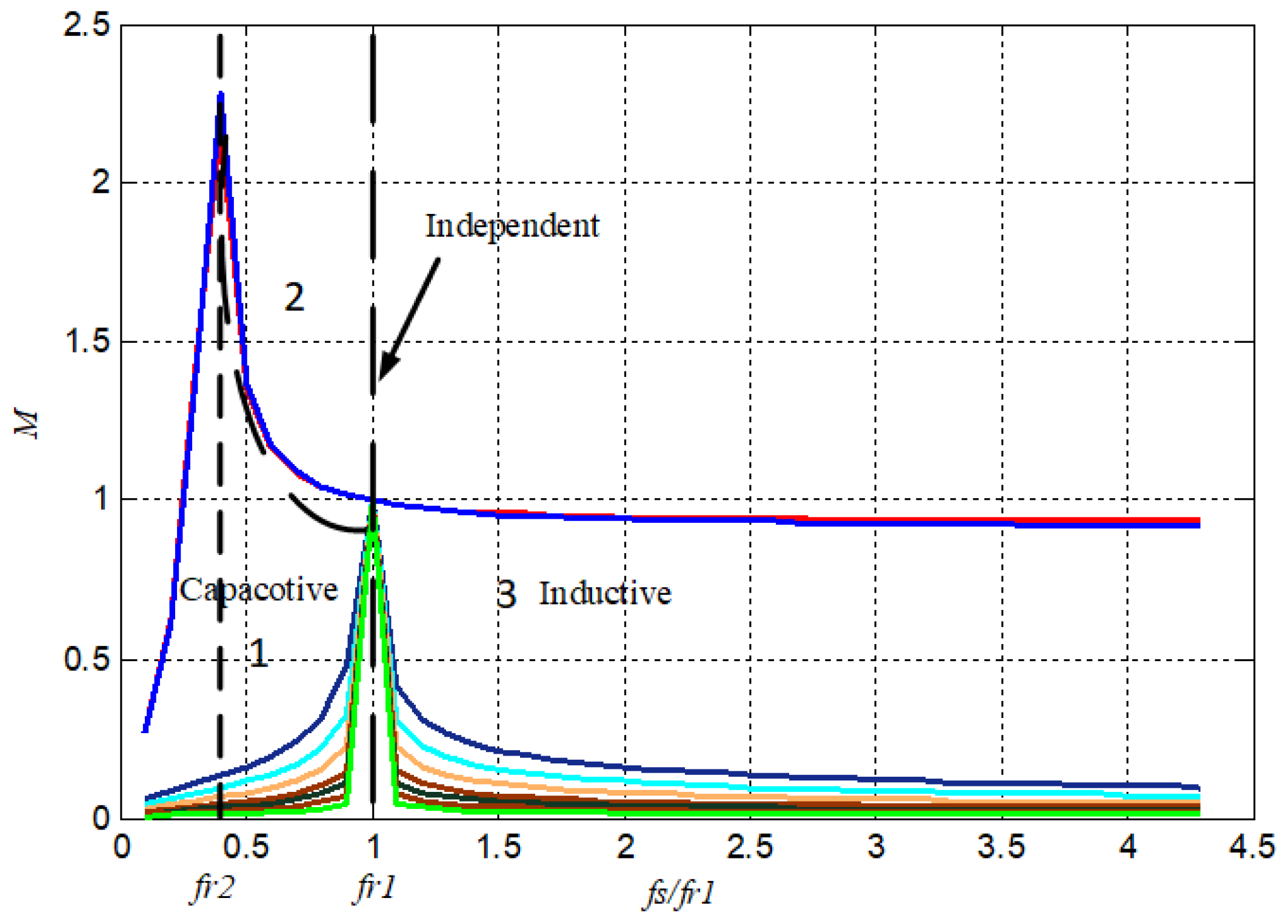
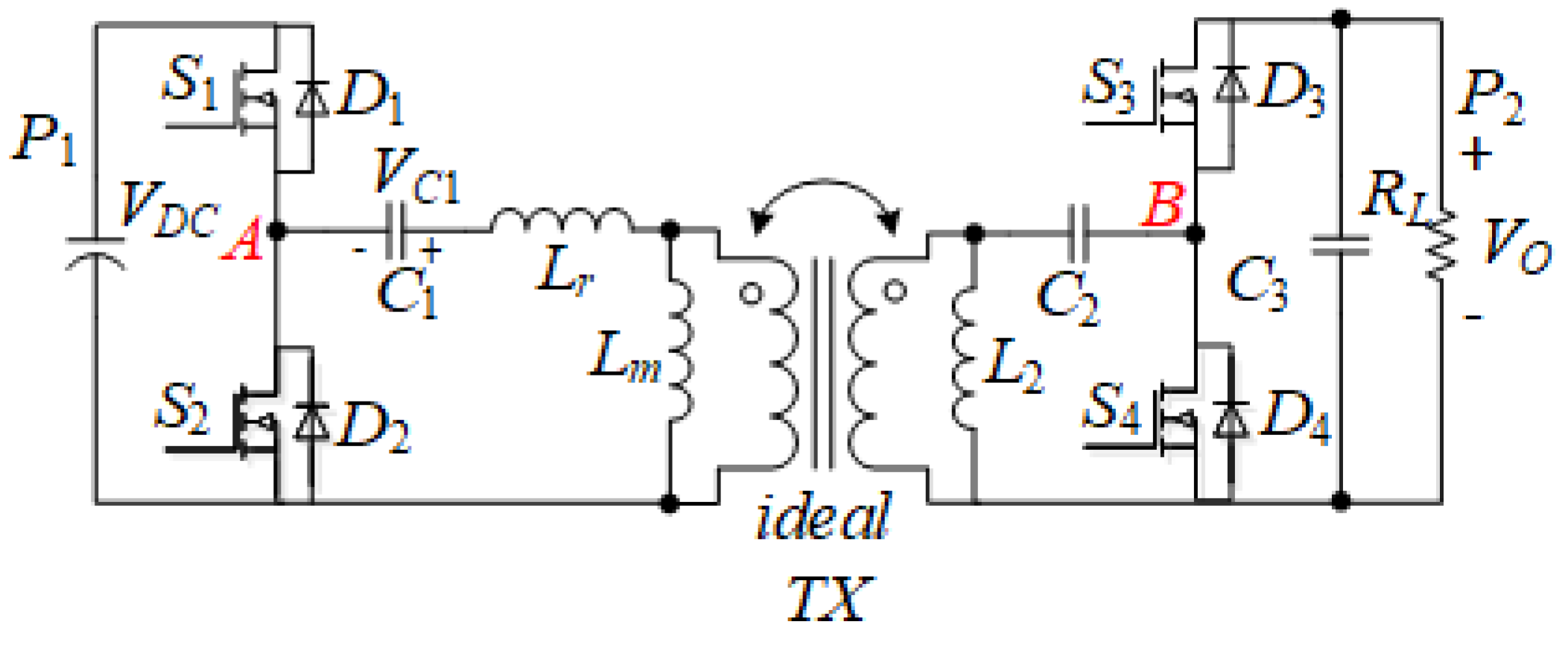
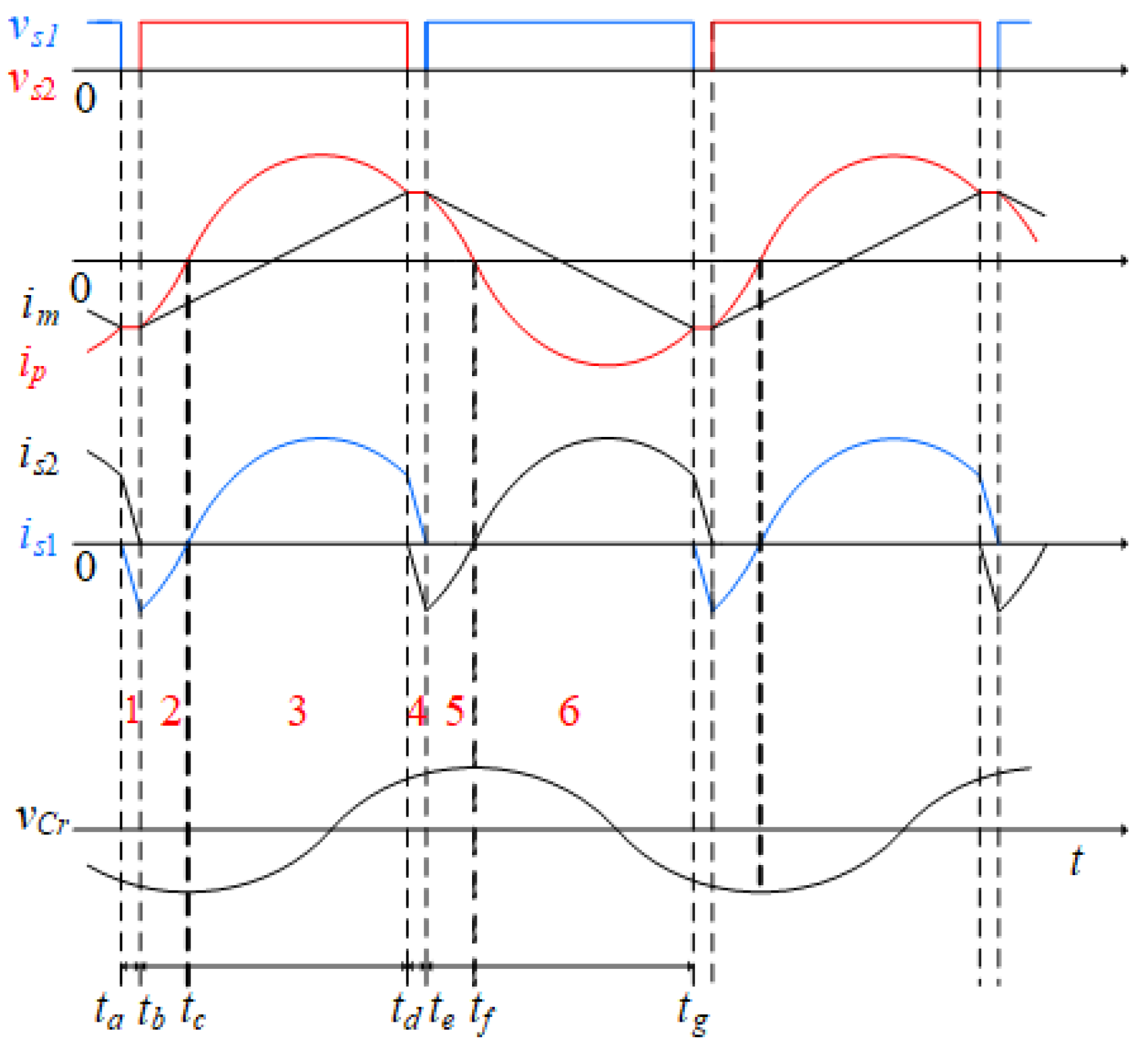

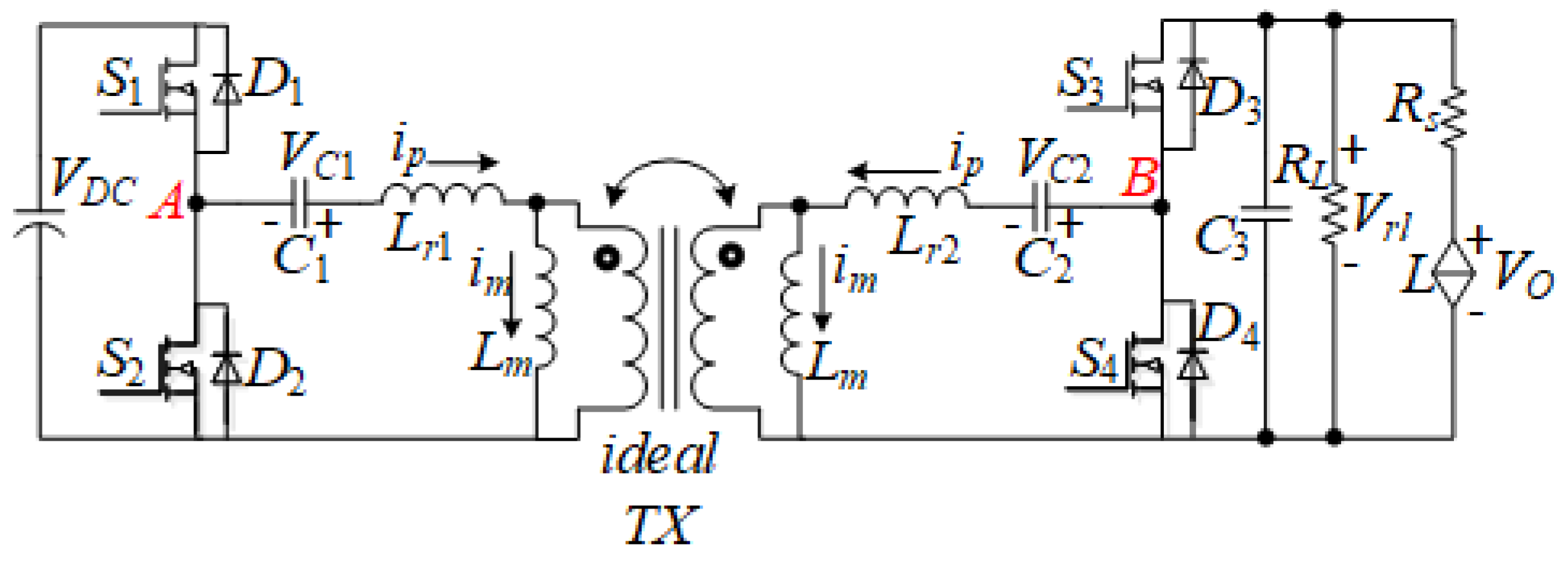
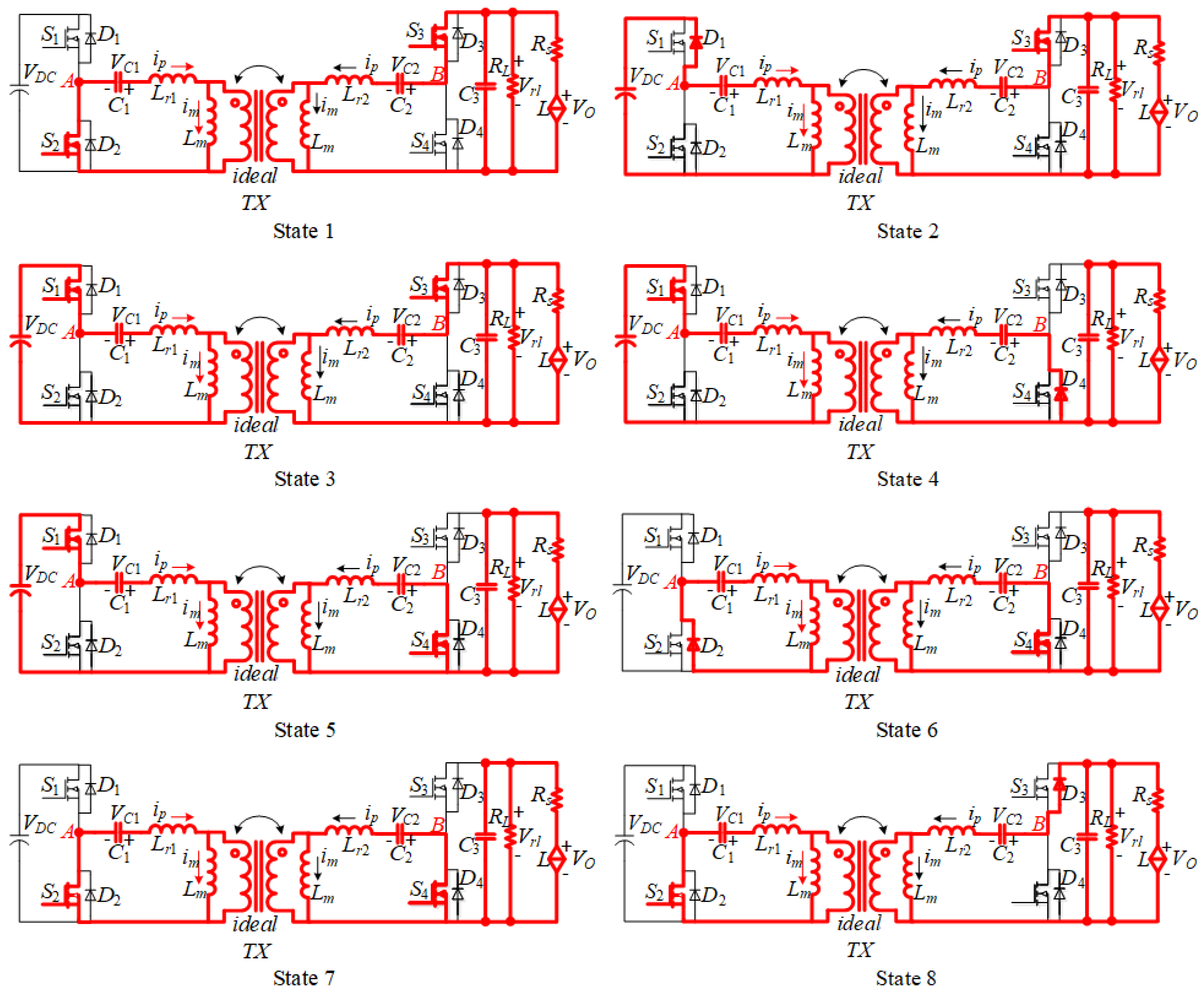


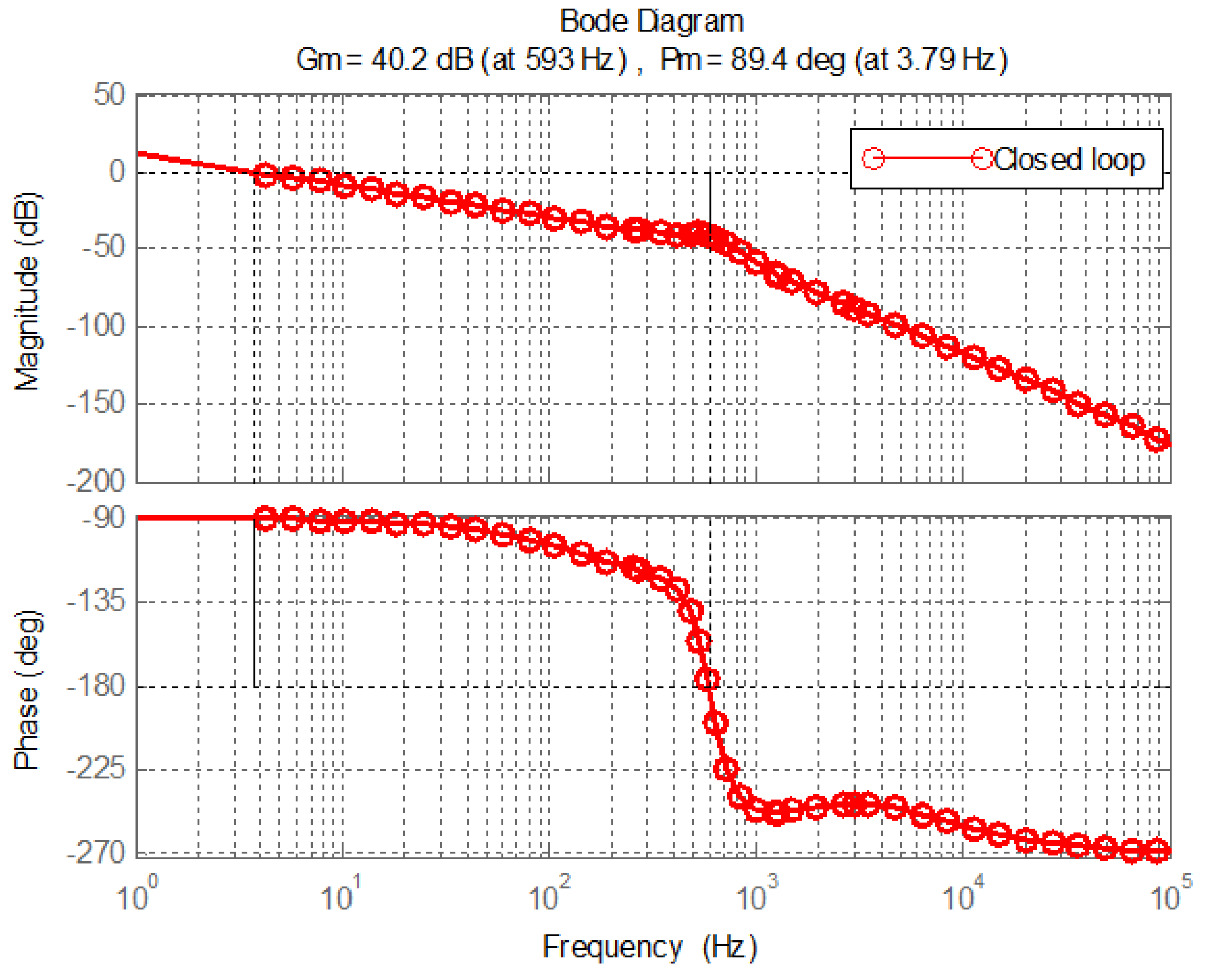

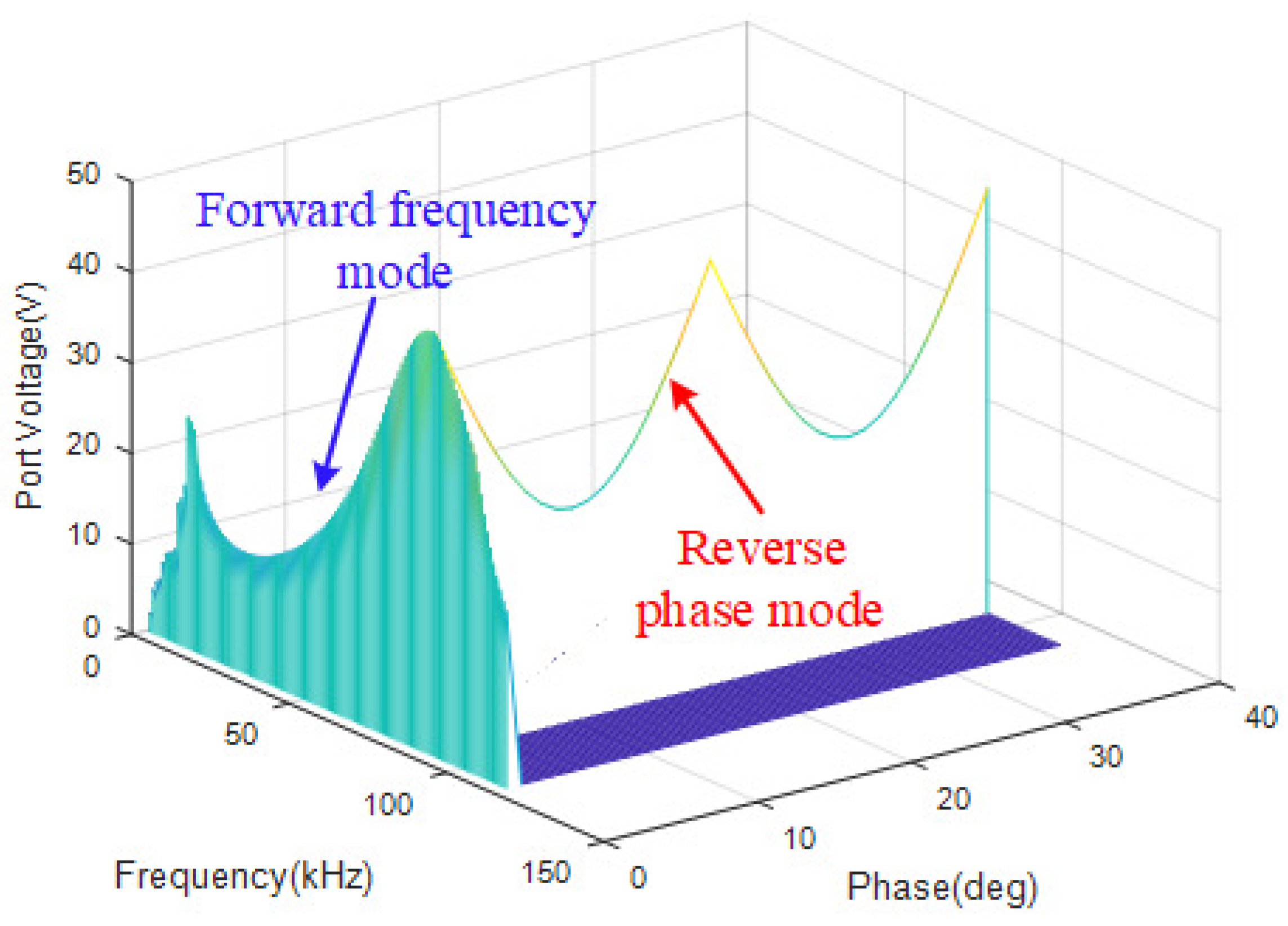

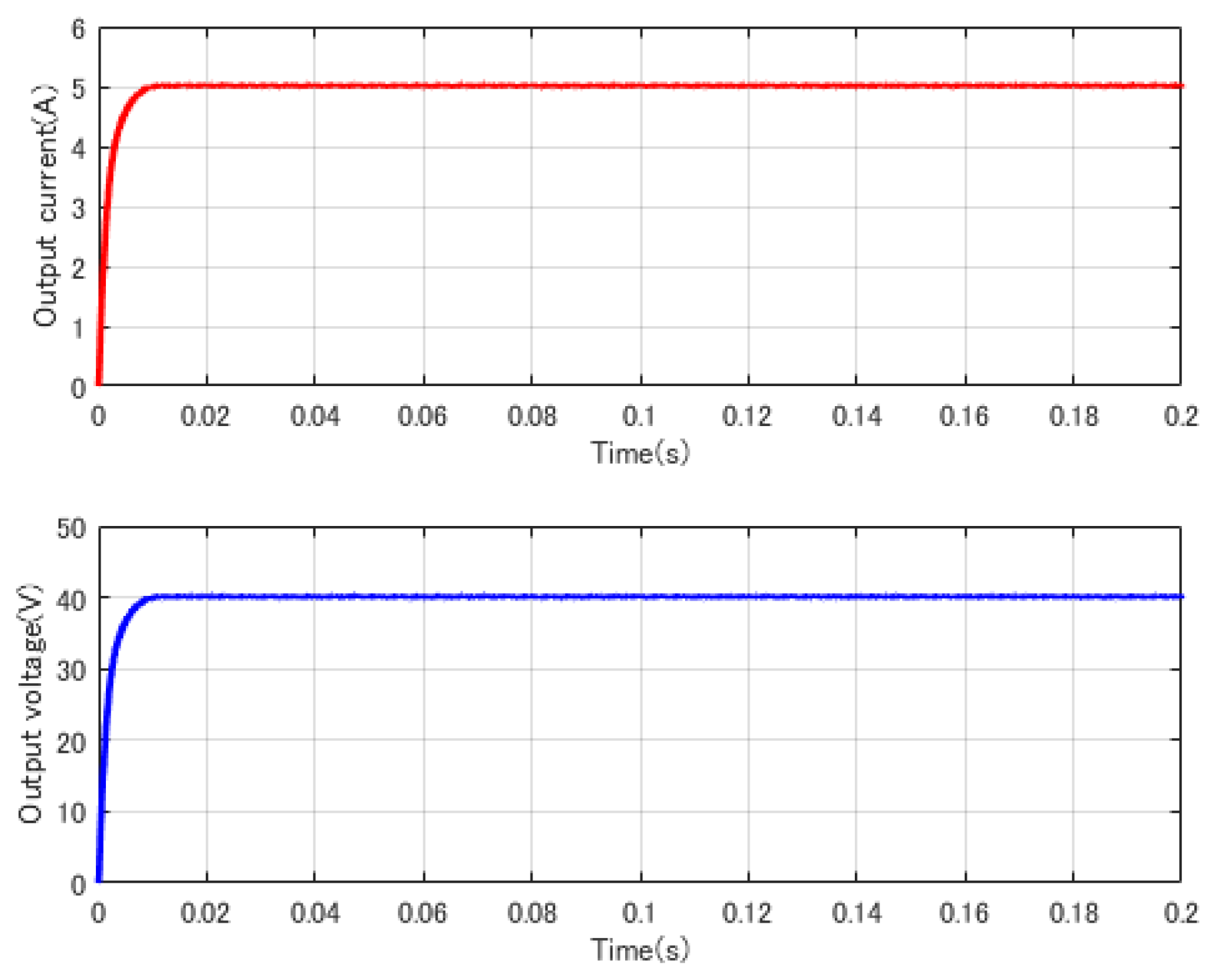

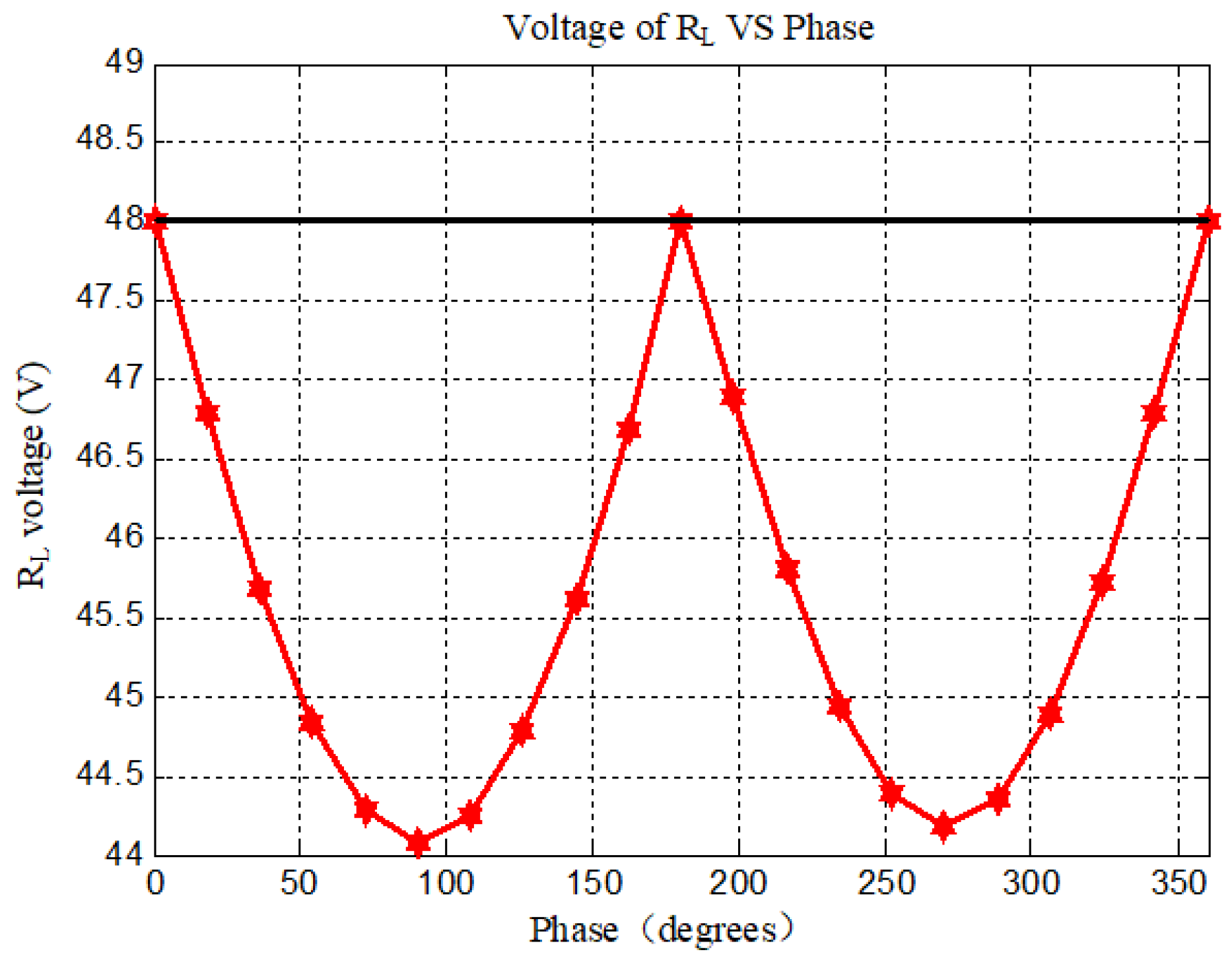



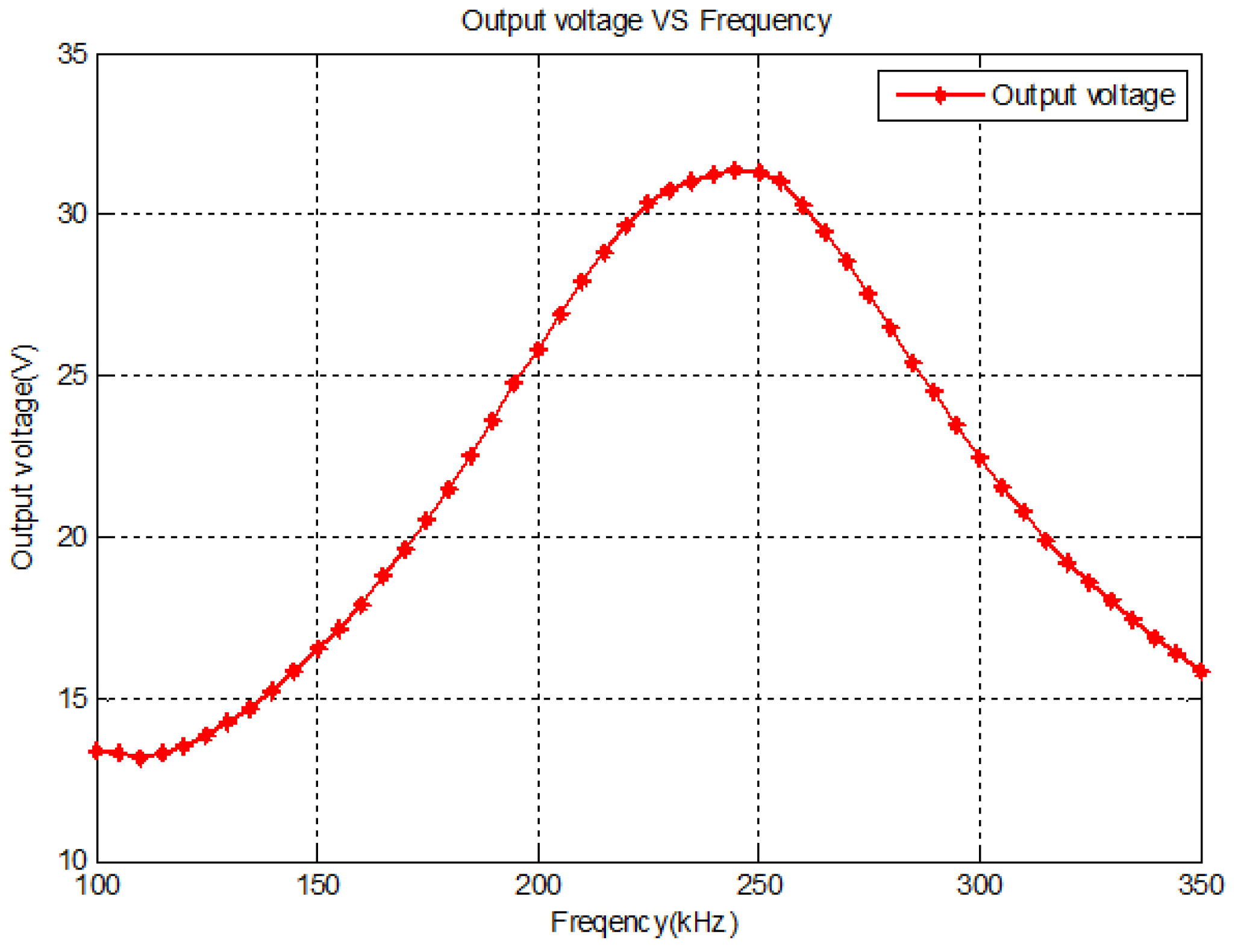

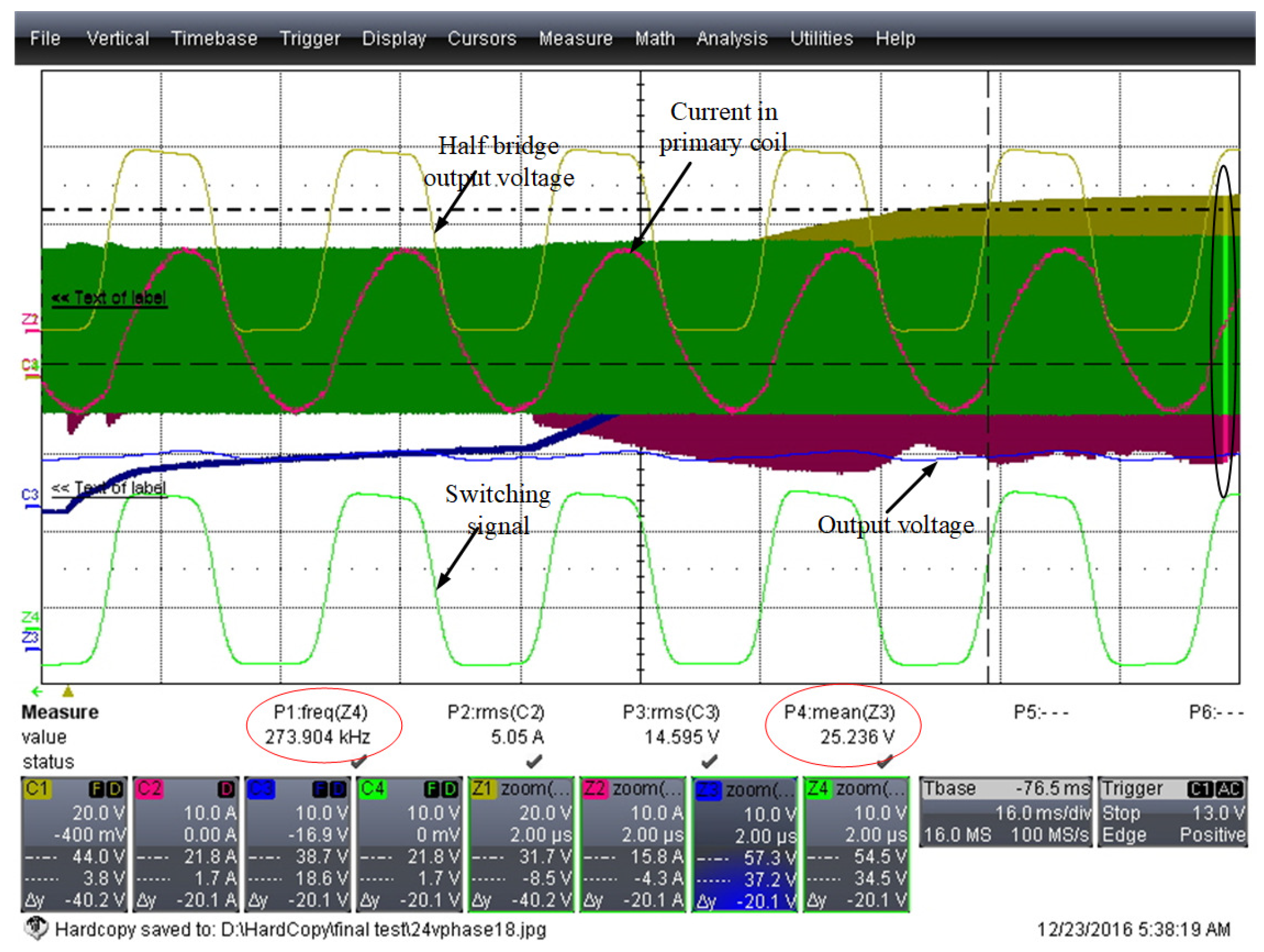
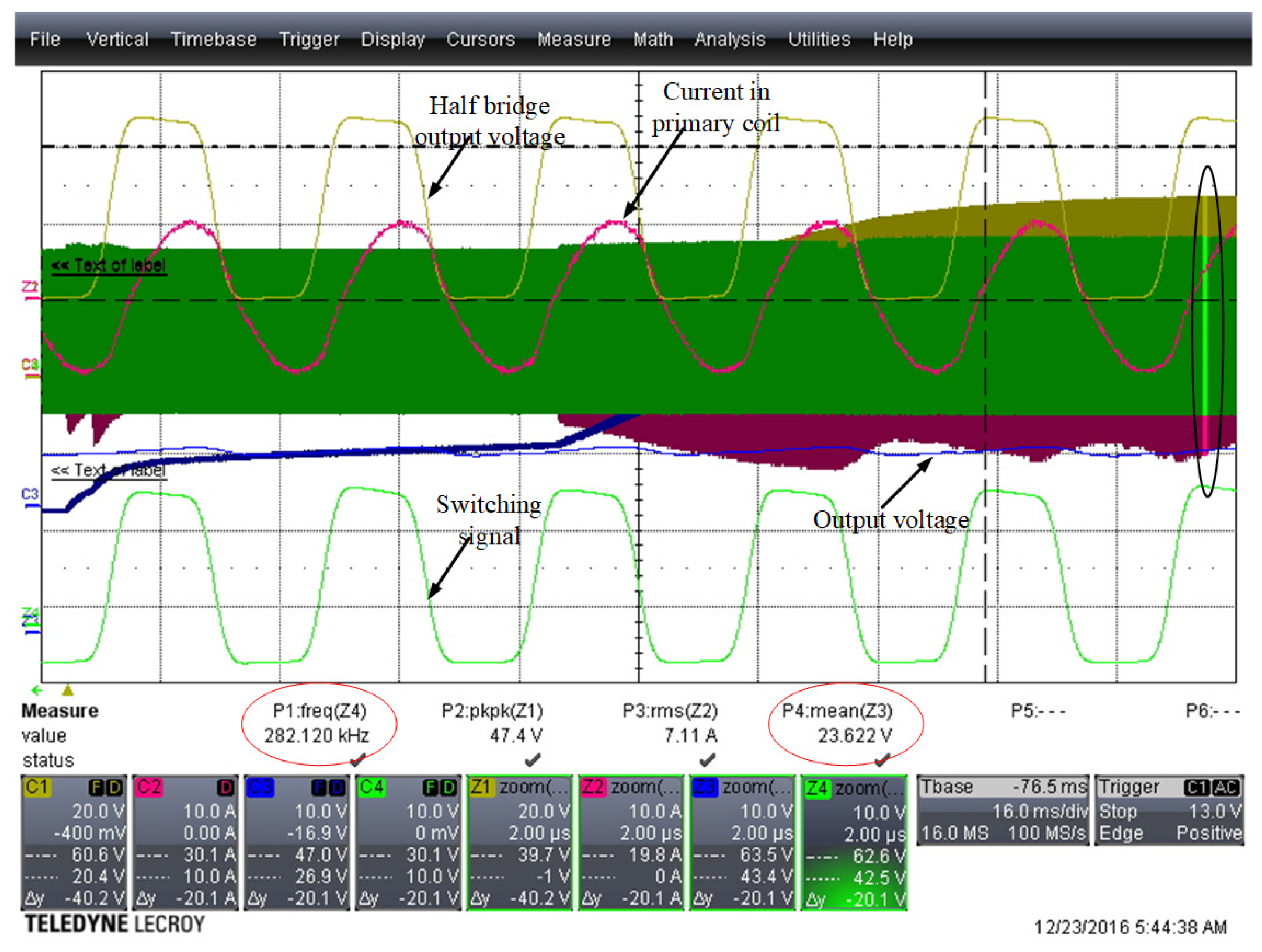

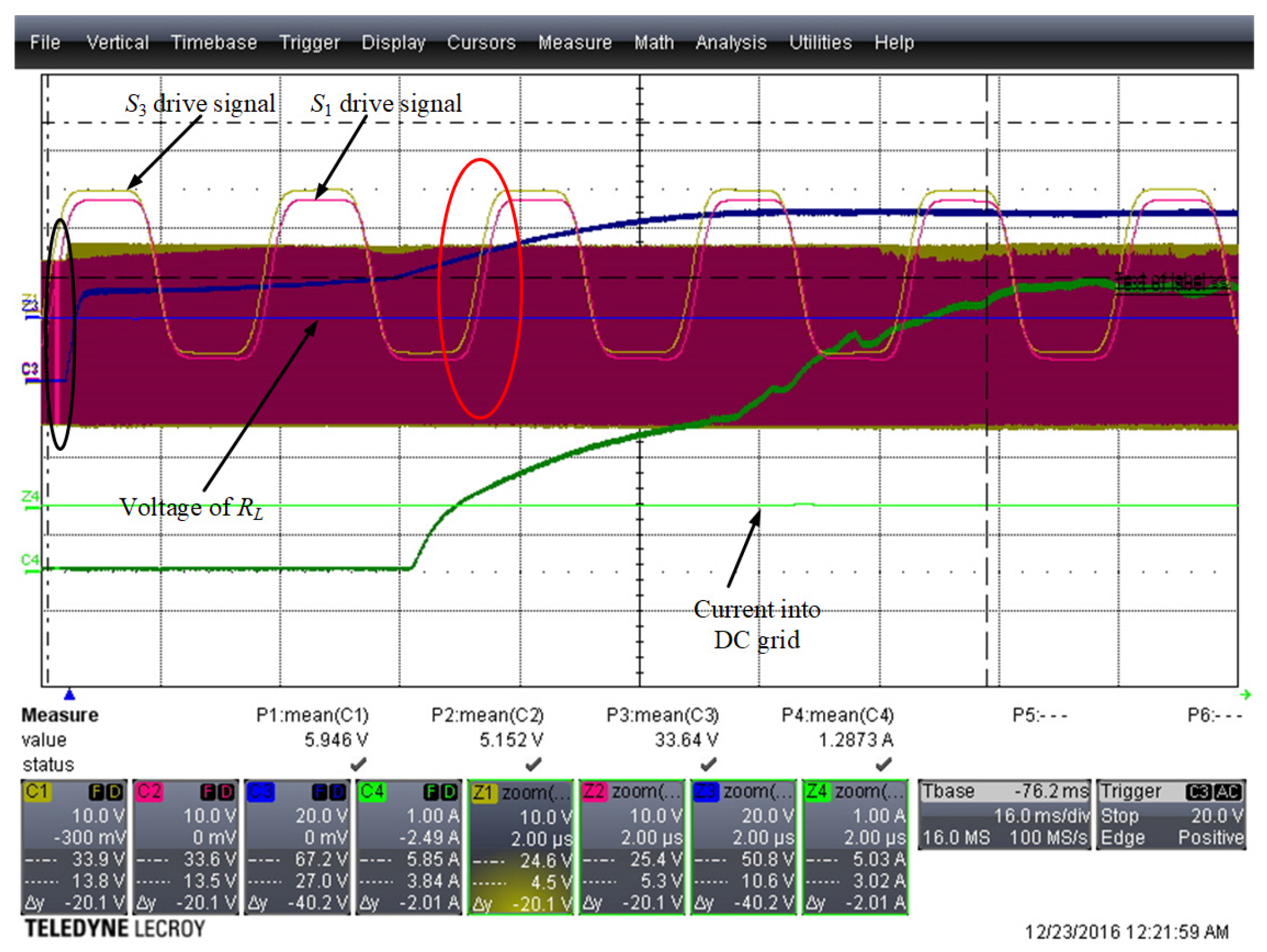
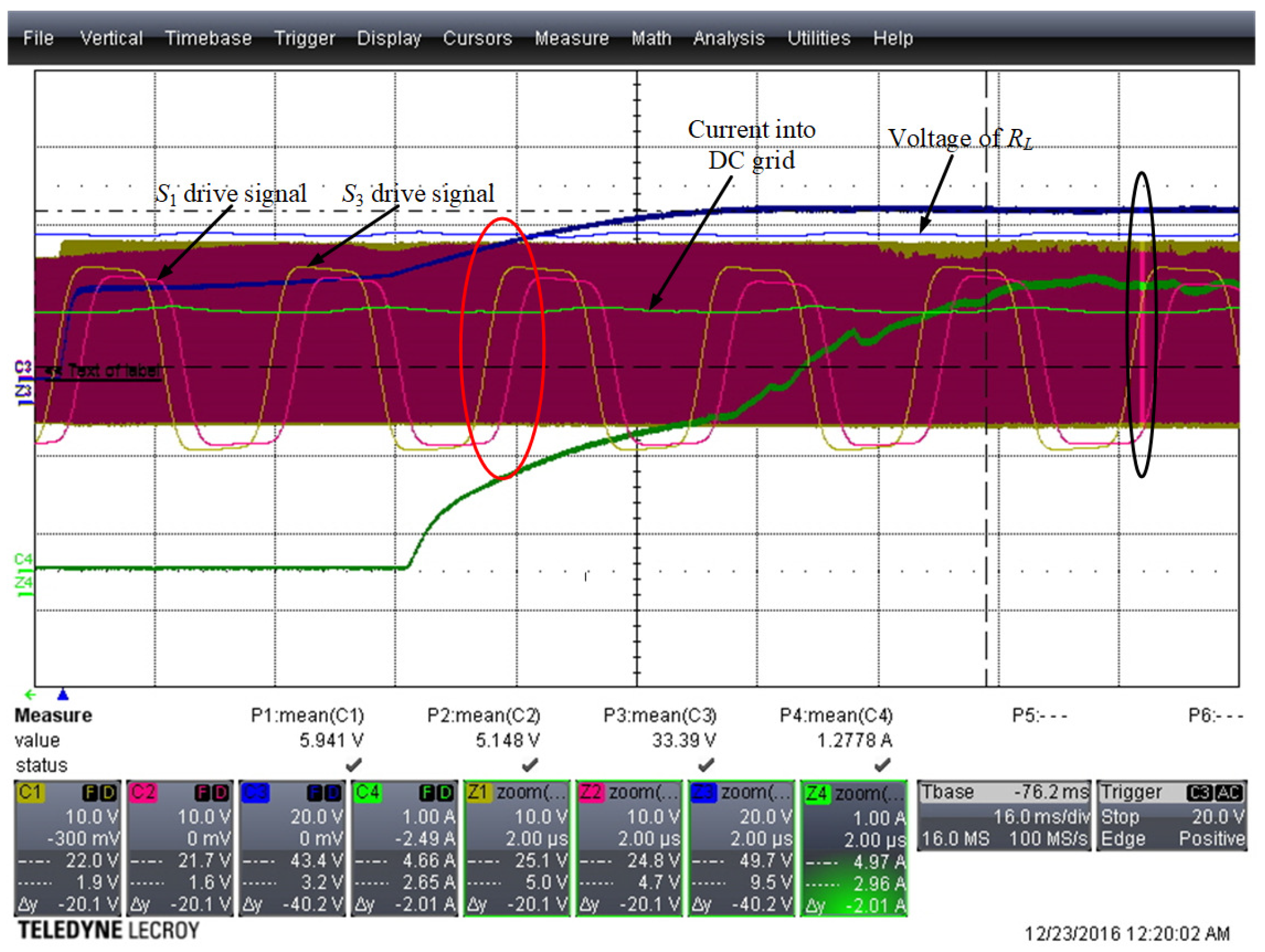
| Parameters | Quantity | Value |
|---|---|---|
| C, C | Resonant capacitor | 0.7 F |
| L, L | Coil self-inductance | 14.6 H |
| k | Coupling coefficient | 0.865 |
| L | Magnetizing inductance | 12.629 H |
| L | Leakage inductance | 1.971 H |
| R | Load resistor | 8 Ohm |
| f | First resonant frequency | 225 kHz |
| f | Second resonant frequency | 83 kHz |
| V | Suply voltage source | 48 V DC |
| S, S, S, S | Power CMOS | RF540 |
© 2019 by the authors. Licensee MDPI, Basel, Switzerland. This article is an open access article distributed under the terms and conditions of the Creative Commons Attribution (CC BY) license (http://creativecommons.org/licenses/by/4.0/).
Share and Cite
Xu, S.; Jiang, W.; Hashimoto, S. Analysis and Design of an Air-Coupled DC Transformer with a Hybrid Modulation Control Method. Energies 2019, 12, 2570. https://doi.org/10.3390/en12132570
Xu S, Jiang W, Hashimoto S. Analysis and Design of an Air-Coupled DC Transformer with a Hybrid Modulation Control Method. Energies. 2019; 12(13):2570. https://doi.org/10.3390/en12132570
Chicago/Turabian StyleXu, Song, Wei Jiang, and Seiji Hashimoto. 2019. "Analysis and Design of an Air-Coupled DC Transformer with a Hybrid Modulation Control Method" Energies 12, no. 13: 2570. https://doi.org/10.3390/en12132570
APA StyleXu, S., Jiang, W., & Hashimoto, S. (2019). Analysis and Design of an Air-Coupled DC Transformer with a Hybrid Modulation Control Method. Energies, 12(13), 2570. https://doi.org/10.3390/en12132570





